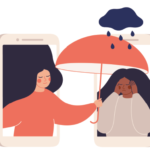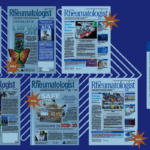Providers are often troubled by the patient’s agenda. Up to one-third of patients visit the doctor for a reason other than their chief complaint. This brings up an “Oh, by the way” comment that addresses a patient’s real reason for visiting. White described that 21% of patients raise new problems at the end of the visit.5 A delayed broaching of a worrisome symptom may derail the entire interaction and annoy the clinician. What might engender such a delay? Patients may be deciding whether they can trust you. They might be embarrassed about, or fearful of, the implication of their symptoms (e.g., ischemic chest pain). Finally, they might be confused about the importance of a symptom.
At the University of Colorado Denver (UCD) School of Medicine, we teach the concept of the two CCs: the chief complaint and the chief concern. Providers need to understand what each of these is and remember that sometimes they are quite different. A patient may be worried about an issue or complication that you would never suspect.
Many providers find themselves troubled by powerful patient emotions. We deal with three prominent emotions in medicine: fear, sadness, and anger. We may be tempted to ignore or downplay these to save time and stress on our part. Anger may be most difficult to work with, but anger often stems from fear or sadness, easier emotions to empathize with. All of these emotions can dominate the conversation and consume time, and may often seem tangential to the primary illness.
We clinicians have a need to do our work well. Above all, we need enough time. In your clinic, you may be running behind and feeling stressed and as if you do not have enough time to deal with a high-affect patient. Your view of your role as a provider may also be an issue. You may not have difficulty with giving short-term narcotics for an acute pain situation, but you might feel less comfortable prescribing a high-dose narcotic for a long period of time for a patient who complains of chronic and severe pain. Or, you may think that filling out disability papers is the opposite of what your job is as a rheumatologist. In this situation, it may be that the interaction suffers from your lack of flexibility rather than something specific that the patient requests.
The Cure for Difficult Patient Interactions
The first step in dealing with difficult patient interactions requires us to recognize when a problem is occurring. One might be forewarned by the medical assistant or the receptionist who tells you “The next patient is a doozie.” Sometimes one has a physiologic response, when you see the patient and remember the last troubled visit. Perhaps, you may find yourself in the middle of an interview and realize you have repeated yourself three times. I believe that if you do not recognize that you are in a difficult interview early enough, you will lose any chance of rescuing the situation. To get out of trouble, you need to first recognize you are in trouble.



